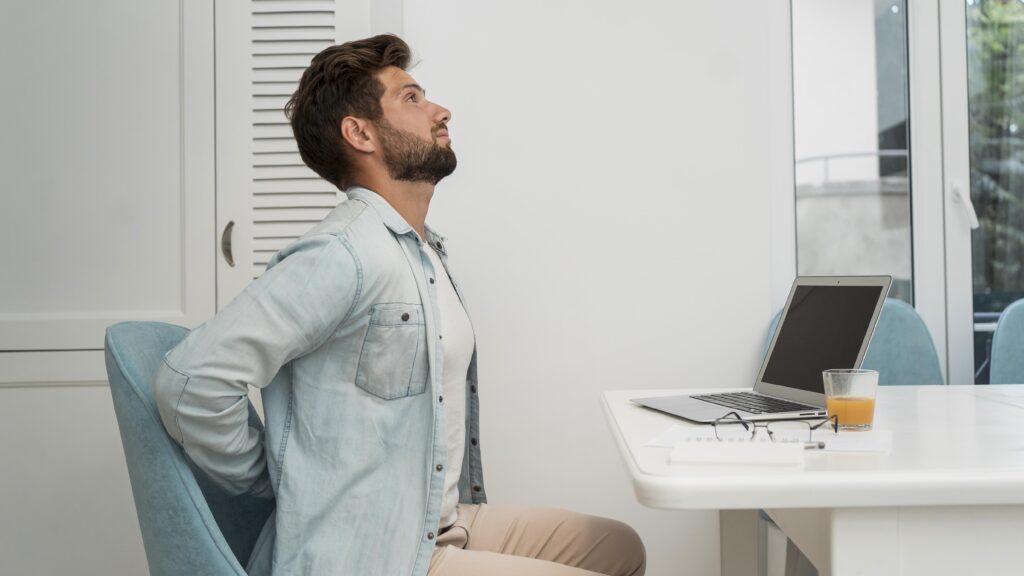How Posture Affects Your Health and Well-Being: A Guide to Understanding and Improving Your Body Alignment

What is Posture?
Posture is the attitude assumed by the body either with support during muscular inactivity, or the coordinated action of many muscles working to maintain stability. It forms an essential basis that is being adapted constantly.
Our posture is an active process involving not only our muscles and joints but also our perception, emotions, and the environment we are in. Even seemingly static positions, like sitting or standing, are full of tiny adjustments and movements.
Posture is a highly individual and dynamic aspect of human physiology. It is more about how your body adapts and interacts with different situations than a fixed ‘correct’ or ‘incorrect’ state. Posture can be simply defined as the way in which we hold our bodies while standing, sitting, or lying down.
Inactive Posture: Describe postures adopted during resting or sleeping, and they are more suitable for this purpose when all the essential muscular activity required to maintain life is reduced to a minimum.
Active Posture: The integrated action of many muscles is required to maintain active postures, which may be either static or dynamic.
- Static posture-the body and its segments are aligned and maintained in certain positions. Examples include standing, sitting, lying, and kneeling.
- Dynamic posture- the body or its segments are moving—walking, running, jumping, throwing, and lifting.
Posture and Health

Poor posture can be bad for your health. Maintaining a posture that puts stress on a joint such as prolonged slouching (see image at R) or slumping over can:
- Increase the pressure on the spine, making it more prone to injury and degeneration
- Cause neck, shoulder, and back pain
- Decrease flexibility
- Affect how well joints move
- Affect balance and increase the risk of falling
- Make it harder to digest food
- Induce breathing disorder and affect surrounding structures including the heart and phrenic nerve
- In women it can lead to imbalance in the core muscle leading to incontinence and/or pelvic organ prolapse.
Important advice could include:
- Be mindful of posture during everyday activities, like watching television, washing dishes, or walking
- Stay active. Any kind of exercise may help improve your posture, but certain types of exercises can be especially helpful. eg. yoga, tai chi, and other classes that focus on body awareness. It is also a good idea to do exercises that strengthen your core.
- Maintain a healthy weight. Extra weight can weaken abdominal muscles, cause problems for the pelvis and spine, and contribute to low back pain.
- Wear comfortable, low-heeled shoes. High heels, for example, can throw off balance and force a person to walk differently. This puts more stress on muscles and harms posture.
- Make sure work surfaces are at a comfortable height for you, whether sitting in front of a computer, making dinner, or eating a meal.
- Ensure to engage your core (for example deep abdominal and pelvic floor muscles) during strenuous activities and breathe out as you lift. This helps
to stabilize your spine. - Remember to maintain a neutral posture as this helps the body to function
optimally.
And to avoid:
- Static postures such as prolonged sitting and standing.
- Prolonged cross-legged sitting can lead to a bent and asymmetrical
posture, especially for people with low back pain. Erect sitting for
long hours can also cause postural problems. It is recommended to
get up from your chair and move around at least every 30 minutes. - Prolonged standing, usually at work, can lead to musculoskeletal
pain and vascular disorders. Seated breaks are necessary to prevent
the risk of causing associated pain or discomfort.
- Prolonged cross-legged sitting can lead to a bent and asymmetrical
- Smoking. Smoking habits were suggested to have a long-term effect on the
posture control system as it increases the risk for lumbar disc degeneration.
FOR FURTHER INFORMATION see your local Physiotherapist.
Click here to find your closest ANRC Physio clinic
FOR MORE INFORMATION see your local Physio Practitioner.
Quick Contacts
- Phone : +44 7483 807551
- Email : info@anrc-uk.com
- Locations : Horsham, East Grinstead, Ashurstwood, Lingfield
- Country : United Kingdom










